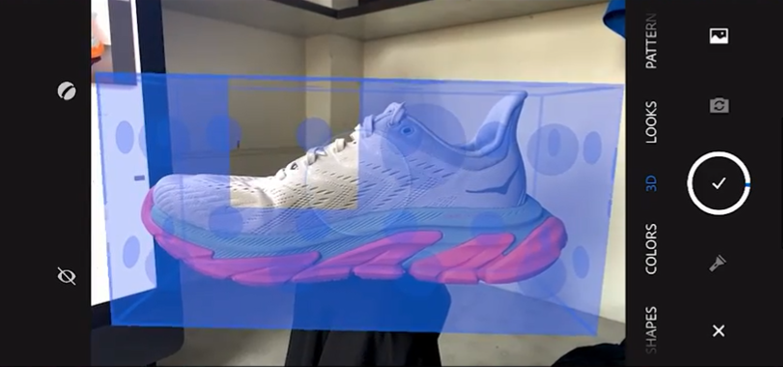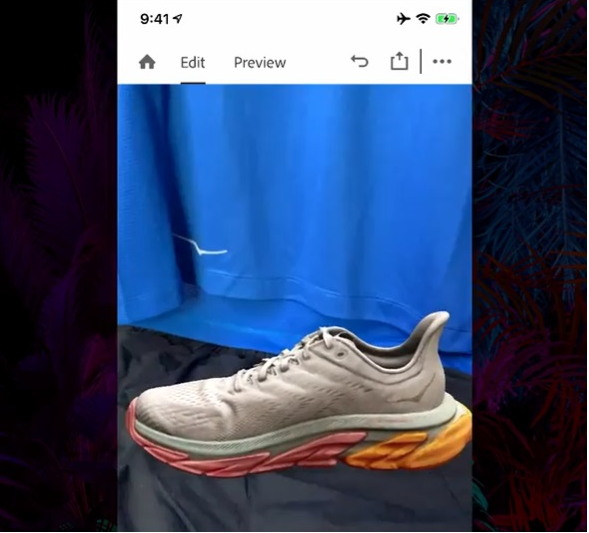Multinational computer software firm Adobe has unveiled a new experimental software prototype that combines 3D scanning, design, and augmented reality (AR) in order to open up the accessibility of 3D assets.
Named Scantastic, the software enables users to scan physical objects with a mobile device, combined with the firm’s photogrammetry pipeline, and turn them into 3D models. These models can then be imported into Adobe’s Aero and Dimension tools in order to create AR experiences or 3D design scenes.

How does it work?
Once launched on a mobile device, Adobe’s Scantastic tool analyzes the environment surrounding the item the user wishes to produce a 3D model of, creating a ‘bounding box’ which encapsulates the object in focus automatically. Once the bounding box has been created, the user can start the capture process. Scantastic automatically places an optimized net of stations around the object, directing the user where to pan their mobile device in order to capture photos of the object from all angles. Once these photos have been captured, they can be saved to create a cloud for processing.
Once the photos have been processed and a 3D model created, the user can then place it into a 3D design scene within Adobe Dimension where the model can be rotated and repositioned within the scene to suit the creator’s design.
Aside from design applications, the 3D model can also serve a whole host of other purposes, including AR experiences. The creator can send the 3D model to another user, who can launch the model in Adobe Aero to show the digital model of the object in a live view through the mobile device’s camera. Essentially, Scantastic allows users to take a real-world object and create a digital 3D model, before bringing the object back into the real world using AR.

Adobe and 3D printing
Users can design and print their 3D creations through Adobe’s subscription-based Photoshop CC software. In 2014, Adobe began adding support for 3D printing to the program and has continued to update it since. Initially only featuring a handful of MakerBots and Shapeways, over the last few years, Photoshop has increasingly added more 3D print preparation, export options, and printer profiles.
Shortly after, Adobe announced it had required Mixamo, a San Francisco-based company that produced a range of quality 3D animations and characters. Mixamo’s 3D technology was integrated into Adobe Photoshop, increasing what users and designers could do with 3D content.
In 2016, Adobe Fuse was developed, enabling anyone with computer and internet access to create their own 3D characters for 3D animation. A year later, Adobe launched a new cloud-based software called Project Felix which allows graphic designers to combine 2D and 3D images, combined with a new 3D model library on Adobe Stock. The software optimizes the processes for adding 3D objects to 2D environments, facilitating what is already possible in Photoshop.

3D printing and AR
Over the years 3D printing has widely used to orchestrate and create several AR experiences.
In 2015, a group of engineers and designers at REIFY created 3D printed “sound sculptures” encoded with music and visuals that play on mobile devices to deliver “cross-sensory experiences.” A year later, Danish 3D printing technology provider Create it REAL announced the integration of AR in its 3D printing platform in order to allow users to preview the object they wanted to print in their hands before printing it.
Elsewhere, software company Trimble launched SketchUp Viewer for HoloLens, an application allowing users to view sketches in mixed reality, while DAQRI used holograms to polymerize 3D objects in resin.
Subscribe to the 3D Printing Industry newsletter for the latest news in additive manufacturing. You can also stay connected by following us on Twitter and liking us on Facebook.
Be sure to subscribe to the Another Dimension podcast on your chosen podcast player to make sure you never miss an episode.
Looking for a career in additive manufacturing? Visit 3D Printing Jobs for a selection of roles in the industry.
Featured image shows Scantastic enables users to scan physical objects with a mobile device and turn them into 3D models. Screenshot via Adobe.



